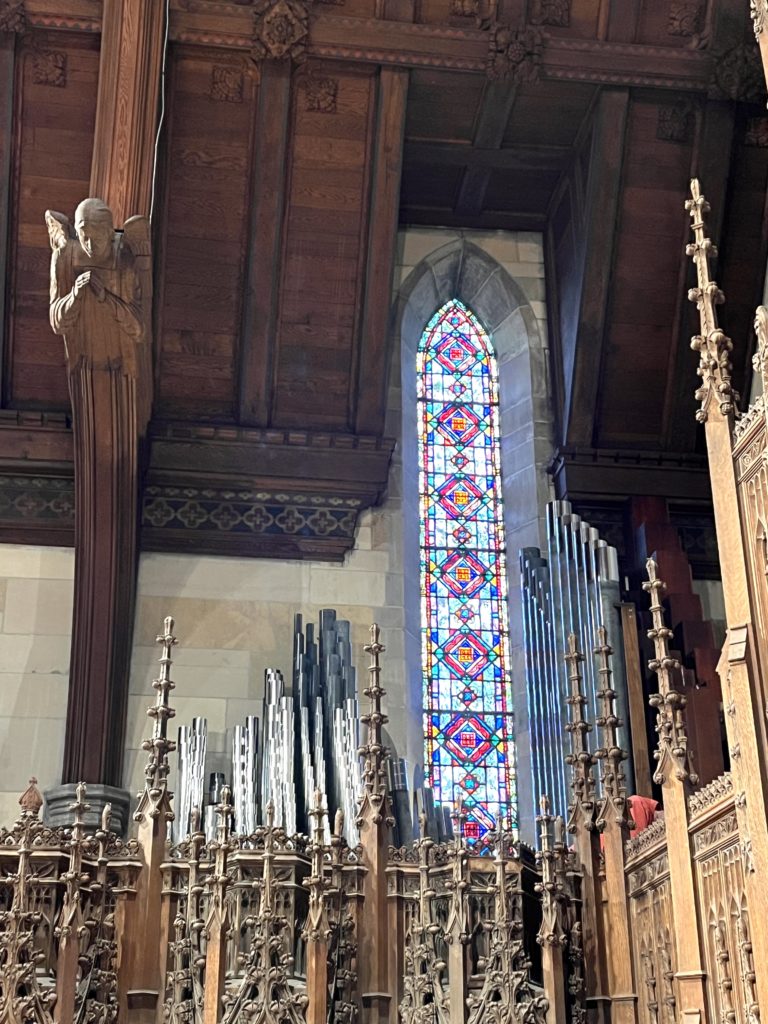News
Light at the end of the tunnel
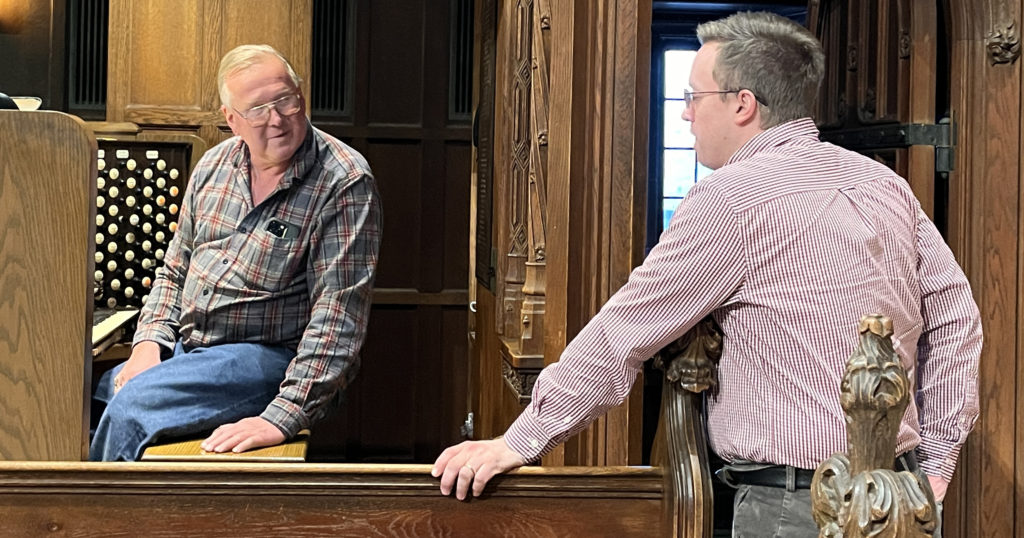
Unexpected discoveries are an inevitable feature of every organ renovation. However exhaustive the preliminary inspection of an old instrument may be, the sheer complexity and tightly-packed structure of a pipe organ mean that full access and examination are impossible until it can be dismantled into its individual components. Unpleasant surprises are commonplace. The current renovation has proved that the St. Paul’s organ is no exception to this rule. One unwelcome discovery has revealed that the floor of the main organ chamber behind the altar reredos is far from level – as much 3/4″ per 6 feet out of true. Compensatory hacks over many years became necessary as the organ was modified and enlarged. As the organ components are returned and repositioned in their new and improved layout, a more unified and highly calibrated leveling solution will be installed.
Over the course of winter 2022-23 a good portion of the dismantled organ has been receiving attention in the Vermont shop of organ builder Russell and Co. A myriad of small but fixable issues have been dealt with. The original 1929 organ was in bad shape from water damage and some poorly-wrought modifications in 1956. Aging wind chests that were held together here and there with string have been rebuilt, leathers cleaned or replaced, and individual pipes carefully straightened, adjusted, soldered, and in some cases replaced. New wooden pipe racks and structural framing have been built, and preparations made for all the required electronic wiring. Before the restored and newly-built components are transported from Vermont to St. Paul’s the remaining pipes and structural pieces will undergo a complete trial assembly in the shop, where everything can be checked and adjusted as conveniently as possible before final installation.
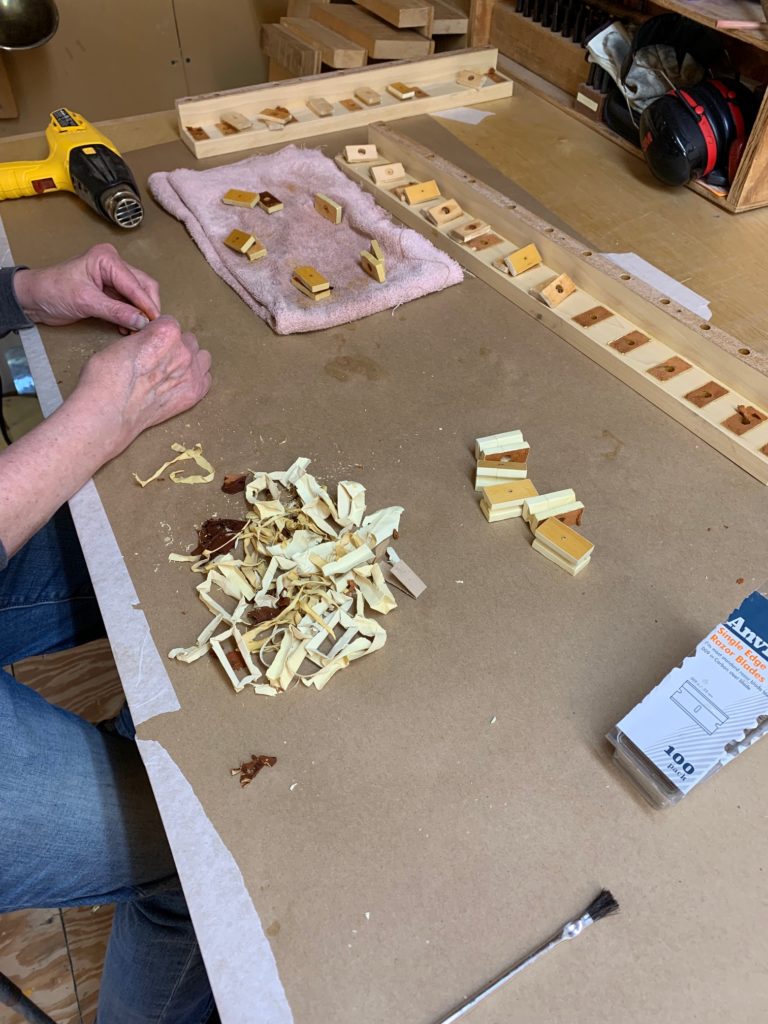
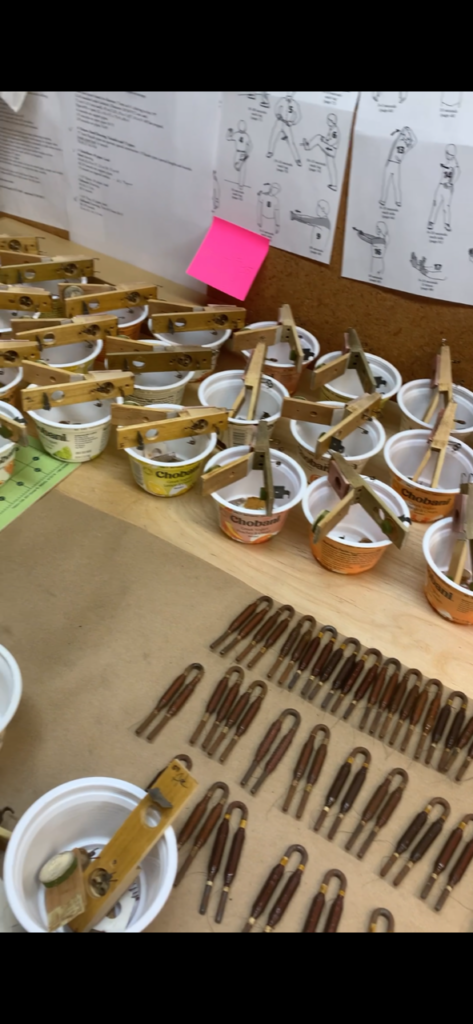
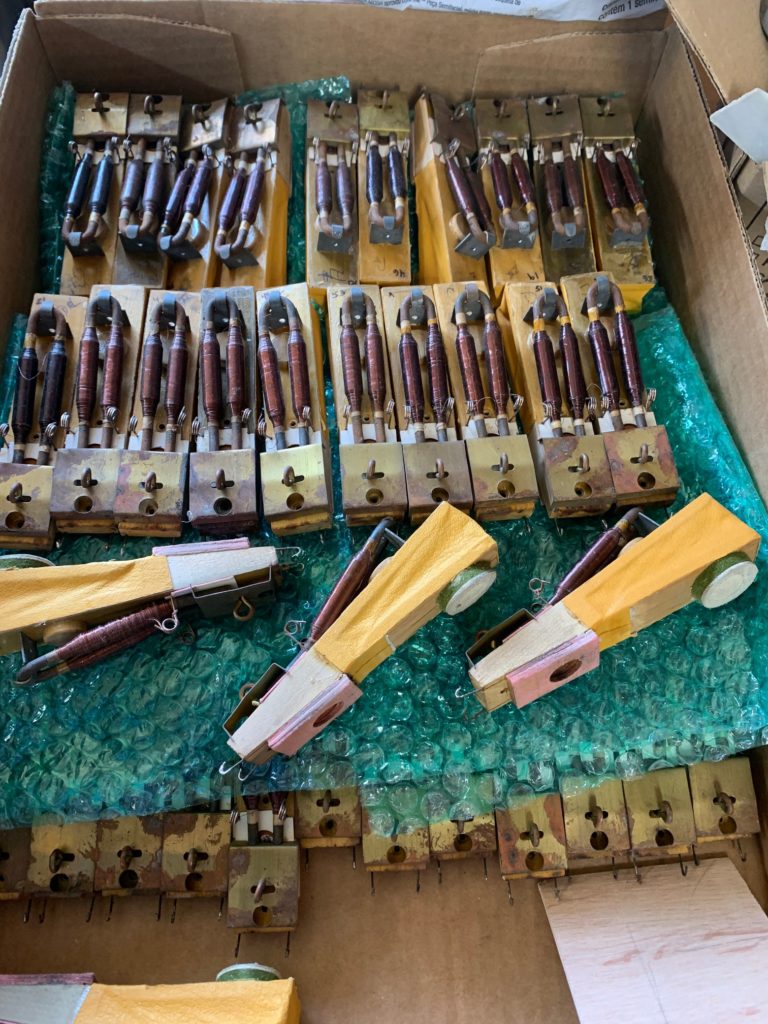
One of the most time-consuming aspects of organ construction and maintenance is the “voicing” of the pipes. Voicing is the process of making minute and subtle adjustments to the position of the constituent parts of each pipe, so that it produces the exact tone quality, pitch, and volume that is desired. It requires a fine ear, and great experience and collaboration on the part of the organ builder’s crew. A full set (stop) of 61 pipes can take as little as eight hours, or more than 30 hours to voice. Additional challenge is provided by the difficulty of access: at St. Paul’s some of the pipework on the east wall is more than 20′ above floor level. A new arrangement of removable tuning planks is being designed to make this process easier going forward, along with some improvements to the actual tuning mechanisms.
The most recent visit by the organ builders included the revoicing of two previously installed stops, to suit the particular acoustics of the church. As more stops are reinstalled, the volume balance between them changes and must be adjusted. Among other things, the intriguingly-named Gemshorn (“goat’s horn”) stop was installed, some “rough regulation” of other stops was begun, and work continued on the pedal stops to gradually replace the digital sounds that have been heard for the last two years. The next long visit after Easter will begin the major work of installing the remaining pipes – 4,263 of them to be exact, or about 60% of the final number.
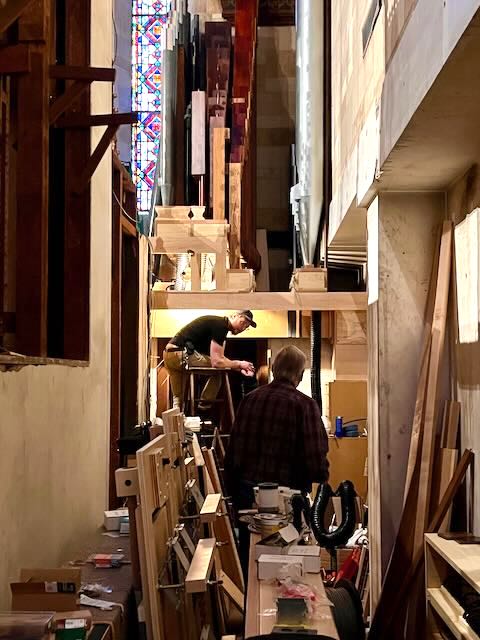
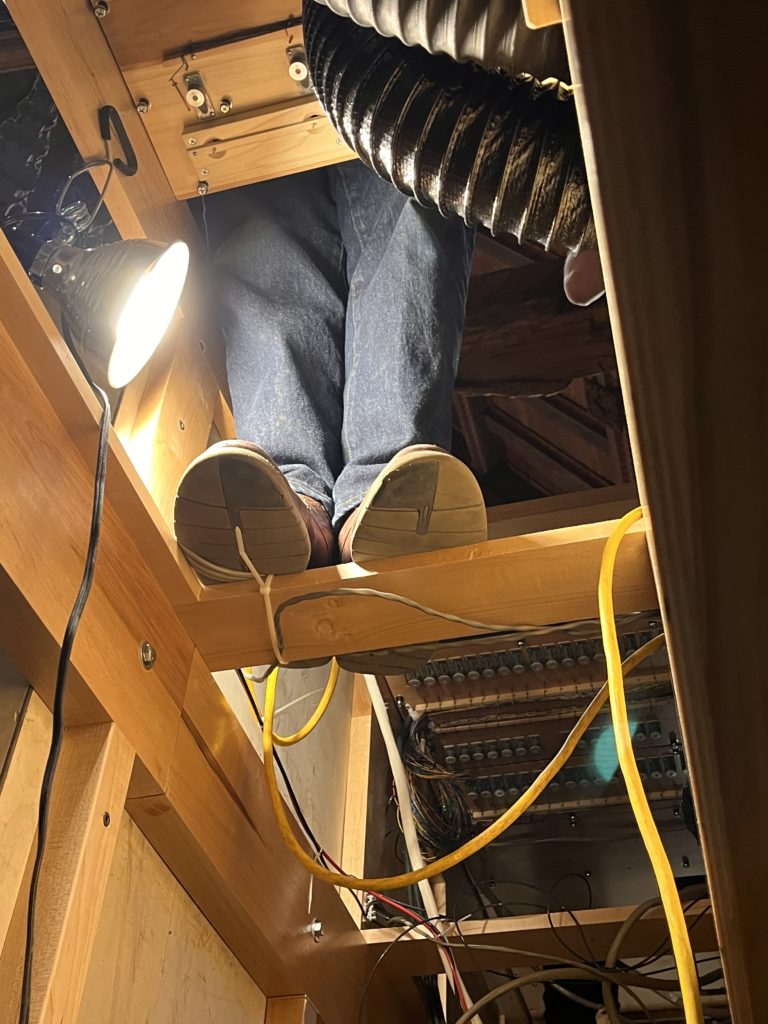
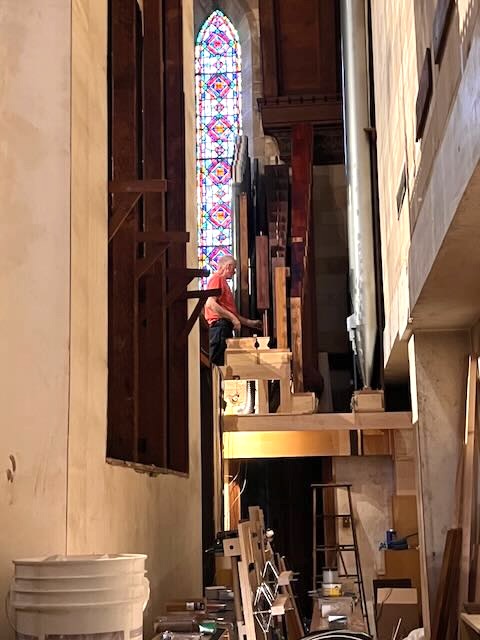
Two significant components of the organ remain incomplete at this time. One of these, currently under construction, is the electronic control system for the entire organ. This will be a brand new and highly updated system, using a commercial computer motherboard and state of the art software to meet the unique needs of our large and elaborate instrument. The final and crowning piece of the organ renovation will be the construction of a console, almost entirely from new parts and enclosed in a new case. One important goal for the new console is to construct it on a moving platform so that it can be rolled out into the center of the chancel – a location that is strongly desirable for many concerts and recitals.
When will it all be finished? The best guess suggests that the vast majority of the instrument will be installed and playable by the end of October, so that all the temporary digital voices can then be discontinued. Finally, and fingers crossed, the new console will be moved into place and connected to the instrument in late spring 2024. It has been a long wait, longer than expected due almost entirely to the exigencies of the Covid pandemic and associated supply and labor issues, but we can see light at the end of the tunnel. There will surely be a mighty and joyful celebration when the wait is over.
The latest pipe work installed in the north-east corner of the church. Keen eyes will notice some differences from the prior placement of certain stops, as well a more spacious arrangement that allows easier access for maintenance.
